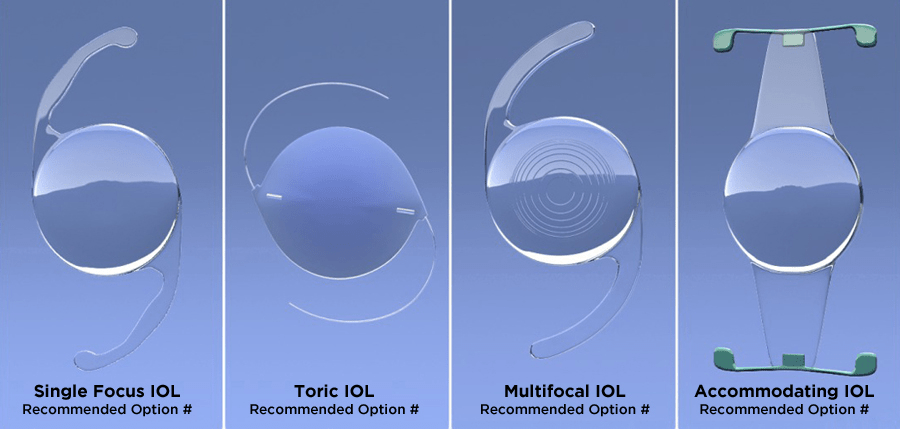The Gulfcoast Eye Care Doctors have either authored or reviewed and approved this content.
Thanksgiving Closure: We will be closed on 11/28-11/29. Happy Thanksgiving from all of us at Gulf Coast Eye Care

The Refractive Lens Exchange procedure is done utilizing a femto-second laser to remove and replace the non-functioning crystalline lens of the eye, most often with multifocal implant. This procedure is for patients who want to reduce their need for glasses and contacts. RLE can correct presbyopia, nearsightedness, farsightedness, astigmatism and presbyopia in patients who otherwise may not be a good candidate for LASIK or PRK. Refractive lens exchange is almost identical to cataract surgery, however the lens being replaced is clear, instead of a cloudy lens caused by a cataract. By replacing the aging lens within the eye, you are eliminating the need for cataract surgery in the future.
The procedure is done in an outpatient setting and takes about 20 minutes to complete. You can expect to be at the center for roughly 2 hours. Patients are seen for follow up visits at 1 day, 1 week, 1 month, 3 months, 6 months and 1 year. Patients do need a driver on surgery day as well as at their 1 day follow up. There are 3 eye drops that will be used post operatively a few weeks following surgery. Most patients are able to resume regular activity and return to work with a few minor exceptions.

An IOL, or intraocular lens, is a lens implanted in the eye used to treat cataracts or myopia. An IOL is used in surgeries that involve removing the natural lens of the eye and replacing it with an IOL inside the eye. Corrective glasses may be needed after surgery for reading and close work, although they are not as thick and heavy as traditional cataract glasses. IOLs are commonly chosen to provide better distance vision than near vision, and glasses are used for sharp near vision. Sometimes IOLs are chosen to provide better near vision for reading and use glasses for distance vision. However, there are a variety of premium IOL types available that are designed to provide both distance and near vision focus at all times. Most premium IOLs are designed to eliminate your need for, or reduce your dependence on glasses as compared to standard IOL. A premium IOL is an upgrade from a standard IOL. Your ophthalmologist will discuss your vision goals with you and perform a series of simple tests to determine which IOL option is best for you.
Shaped to provide good vision in just one particular range of distances, either near or distance vision. If you have this type of IOL implanted, you will probably need glasses to provide clear vision in the other range. The most common monofocal option to be chosen is to provide better distance vision than near vision. Then glasses are worn for sharp near vision.
Designed to provide correction for both near and distance vision. Therefore, both near and far objects can be in focus at the same time. The brain must learn to select the visual information it needs to form an image of near or distant objects. It will take some time to adjust to a multifocal IOL, and the adjustments may be easier if placed in both eyes.
Works naturally with the eye muscles and is designed to allow the lens to move, or accommodate, and focus on objects near, far, and all distances in-between.
Offers patients with moderate astigmatism better vision without glasses. Astigmatism is a common eye condition caused by an irregularly shaped cornea or lens, and causes distorted or blurred vision. Glasses may be needed to correct the astigmatism if other IOL options are used.
Slightly flatter in the periphery as opposed to the traditional IOLs that are spherical, meaning the front surface is uniformly curved. An Aspheric IOL is designed to provide better contrast sensitivity which may improve the ability to see in varying light conditions such as rain, snow, fog, twilight and nighttime darkness.
Seeing more means doing more, so the lens you choose matters. Redefine the boundaries of your vision with cataract surgery that includes the AcrySof® IQ PanOptix Trifocal Lens—the first and only trifocal lens available in the U.S. With these groundbreaking lenses, you’ll be able to see both distance and details more clearly—all while relying less on glasses!